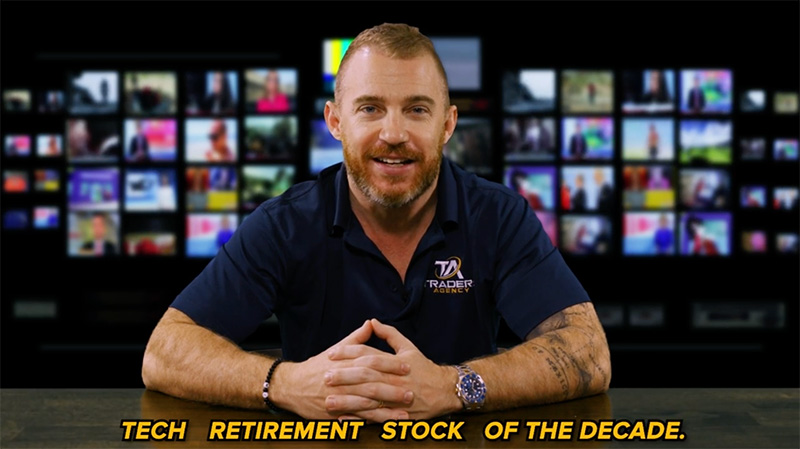Hey everyone, Josh Martinez here with tradersagency.com and welcome to this week’s idea. Today’s date is August the 10th, 2020. We have the NASDAQ 100. We are tracking that 10,000 ticks worth of movement and trading with the E-mini contract is right around $50,000 US dollars, because every tick is worth $5 with E-mini contract. If you trade a micro, every tick’s worth about 50 cents, it’s still a $5,000 US dollar opportunity. This is the daily timeframe. We do like to look at the larger timeframes simply to be able to identify overall direction. Usually off the daily timeframe, if you can find the low price and you can begin to buy the market as it U-turns, then ultimately, what that does is that will begin to push the market bullish for three days, four days, five day, seven days.
The Buy is Important
So finding these low prices, the buy is going to be extremely important, especially for enjoying the overall experience. And what I mean by that is when you finally enter into the market, most people want the market to go their way right away. And we can talk about how it could potentially do that on this symbol. But let’s first talk about trend lines. Some people, what they do is, and honestly just like some people, a lot of traders, the way they learn how to draw trend lines, they find low price and they find the high price. And then they do something like this. They draw their trend lines this way and they go,

“Hey, we’re in the buy zone, we’re in an uptrend.” And frankly, if you don’t know your trend lines or understand the reason of why we draw trend lines, then you’re going to run into this mistake because frankly, this is a terrible trend line, and here’s the reason why.
Why Trend Lines?
Trend lines do three things for us. They divide the mark into a buy zone, sell zone. Anything above the trend line’s a buy zone, where we want to buy. Anything below the trend line is a sell zone, where we want to sell. The second thing is they help us understand market speed. How fast or how slow is the market making higher highs and higher lows? Trend lines will give us that angle of the speed. And the third thing that’s the most important thing is trend lines identify U-turns; where does the market form highs and where does the market form lows? Because ultimately those U-turns equal opportunities. If you take a look at this trend line, you have a low and you have a low and then that’s it. Well, what about all these lows in between?
Why am I doing this?
So here’s what I like to do when I really, because I used to draw my trend line that way, but when I started to really understand what is the purpose? What’s the “why” behind this? Why am I doing this? What’s the end goal in mind? What am I trying to achieve? U-turns, because when you turn to your chart, the market can only go up, it can go down, and it can U-turn. If it’s going up, it’s going up to a U-turn. If it’s going down, it’s going to a U-turn. And if we are U-turning, you want to trade U-turn, okay? So let’s talk about this. What I like to do is find the previous low and then work my way back, okay? And traditionally, if you’re using a good trend line, the market should have multiple touches and should U-turn multiple times, and you can notice that here we have a U-turn, a U-turn, a U-turn, a U-turn, a U-turn.

And if we extend this, that can help us fore-project where the market may U-turn next. So what this ultimately means is we’ve found an angle on the mark that has U-turned the market one, two, three, four, five, six, seven, and more than likely number eight. So to me, this makes more logical sense than doing it the other way, because we have multiple U-turns on this angle. And more than likely if or when the market touches that bottom level, it will give us a buying opportunity. Now, markets usually U-turn at, on and around the same price points. So what we want to do is we want to find these angles in the market like we did with the trend line, and we also want to also look left. Looking left just basically means putting on a line at the current price point. And you will notice that we have a high price and a high price, a daily low price, and here we currently are now.
What does all this mean in a nutshell?
It means this. This market, because we’re in the buy zone, we should only realistically be focusing on buying because the market’s on its way up. Some people, what they want to do is if they see a little bit of bearish movement, they want to sell, they want to sell first and they want to buy second because they want to try to make money on the way down. I have found that to be one of the most challenging things to trade against the trend. Because if you logically think about it, if you’re driving a car and there’s a one-way street, you can drive with traffic. And the reason why you do that is usually you get to where you want to go as fast and as safe as possible, or you could drive against traffic and you may be a really great driver and maybe you can sweeve in and between the cars, but most people are going to get to an accident, have a financial consequence.
Same thing with trading. If the market’s pushing its way up, normally you just want to focus on buying the market because you’re going to be trading with traffic and you’re going to be trading with momentum. And if you trade with momentum, you usually have a better time. Markets U-turn at, on and around the same price points. U-turn, U-turn. Okay? So ultimately we’re at an area or an angle in the market where the market could go up right now. Furthermore, the market is at a spot where if resistance breaks as support, what we can do is, let’s go ahead and get rid of this, and perfect.
Market could come down
Second thing is the market could come down, come near the uptrend line and then ideally you get your U-turn there. But notice how as long as the market stays in the buy zone above this angle that has been U-turning the market bullish literally since April and we’ve had one, two, three, four, five, six, seven U-turns already, this is just U-turn number eight. Notice how this will logically begin to stack the odds in your favor. Now here’s the thing. The thing is we could go up now or could go down and then go up. So the question is, well, how do we know when to get in? Right? Because if you buy the market now and it goes down, that’s like a thousand ticks of bearish movement, that’s a lot of draw down. Most people are going to lose the trade.
Counter trend line
So there is a small technique that I like to utilize. And this technique’s super simple. It’s very easy. Most people get it right away. You don’t need anything fancy. It’s what’s called a counter trend line. And what I like to do is bring in a blue line and just track the downward movement. Now this is a daily timeframe. So every candlestick represents one day worth of trading. What I don’t want to do is wait for a counter trend line break on a daily timeframe and have that candlestick be so big I miss all the opportunity. So what I like to do is go to a one hour timeframe and simply, because the daily timeframe says the market should go up, I’m just going to bring in a blue line. And here on the one hour timeframe, if we are below the blue line, I’m out of the market. I’m out. The moment we enter and close above the blue line, I start buying again. Why? Think about this logically for a moment.

When the market forms a daily low price, look how many candlesticks the market goes up. One, two, three, four, five, six, seven, eight, nine, 10 candlesticks, 10 days in a row. The market goes up. Here’s this low price. One, two, three, four, five, six, seven candlesticks. Seven days, it is just upward moving. Here’s this day, one, two, three, four, five, six, seven, eight, nine, 10. 10 days off the low, 10 days of upward movement. We’re about here? One, two, three, four, five, six, seven, eight, nine, 10. 10 days of up upward movement. It appears that this market after forming low, just likes to go up for 10 trading days, which could be two entire calendar weeks, five days a week of trading, right?
It’s based upon probabilities
So what I’m saying is, I don’t know when the market’s going to go up. I don’t. I don’t have a crystal ball and I can’t predict the future, but based upon probabilities, if we’re in the buy zone, making higher highs and higher lows, the buyers are in control and we’re tracking basically a four to 10,000 tick breakout of the monthly timeframe, and watch my other videos to see that. This could push now, or it could go down and then push up. I don’t know where the low’s going to be, but as long as we’re above the uptrend line, all I have to do is wait patiently. If this market closes above that blue line, what that usually means is that the bearish short-term move is over, the retracement is over and the extension is getting ready to take place. Then we can bring in our favorite entry strategies, counter trend line breaks, bullish candlestick formations, Fibonaccis, tunnel trade long, destination trade long, buy and hold techniques, because if we’re going to U-turn and if this is going to be a daily low, we could enjoy seven to 10 calendar days of upward movement.
And think about this for a moment. Isn’t it a nice thought to be able to buy the market and enjoy about a week of just continuation of bullish movement? That’s what we’re going after. That’s this week’s idea. This is Josh Martinez, and I’ll see you next week.





2 Comments
August 17, 2021 @ 7:53 pm
Josh,
I always learn something from you.
April 29, 2022 @ 4:57 am
I always learn something from Josh.